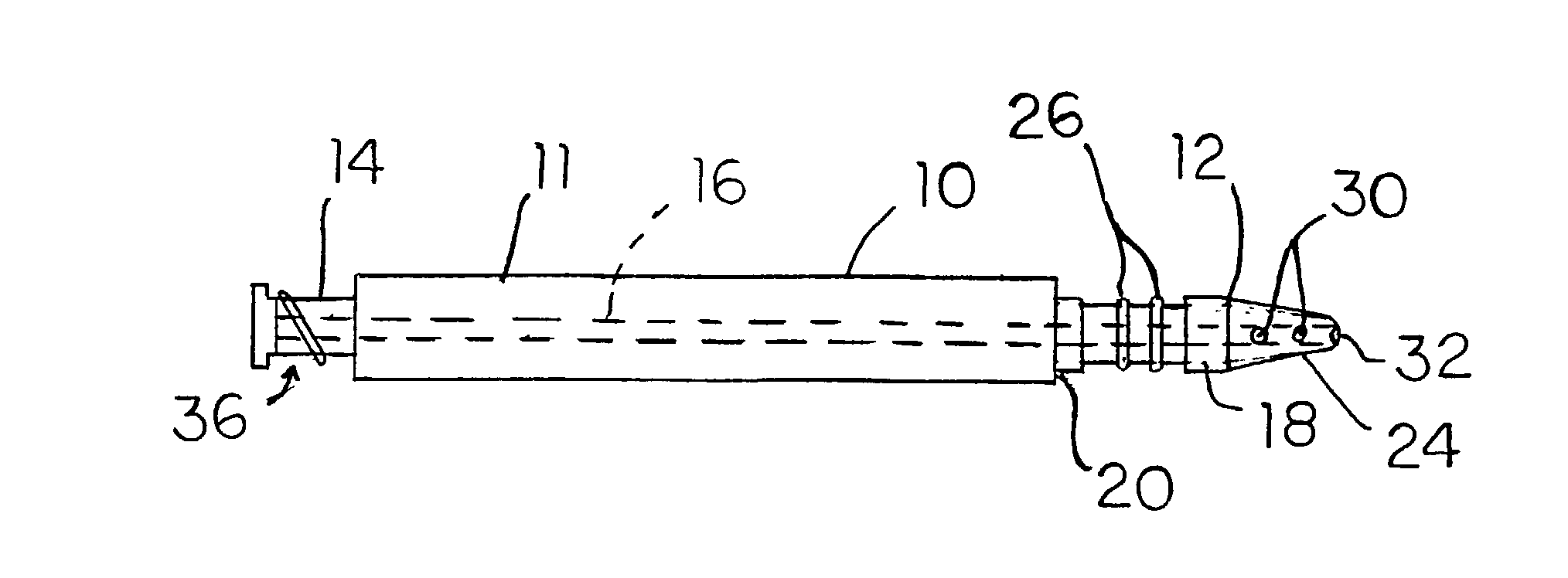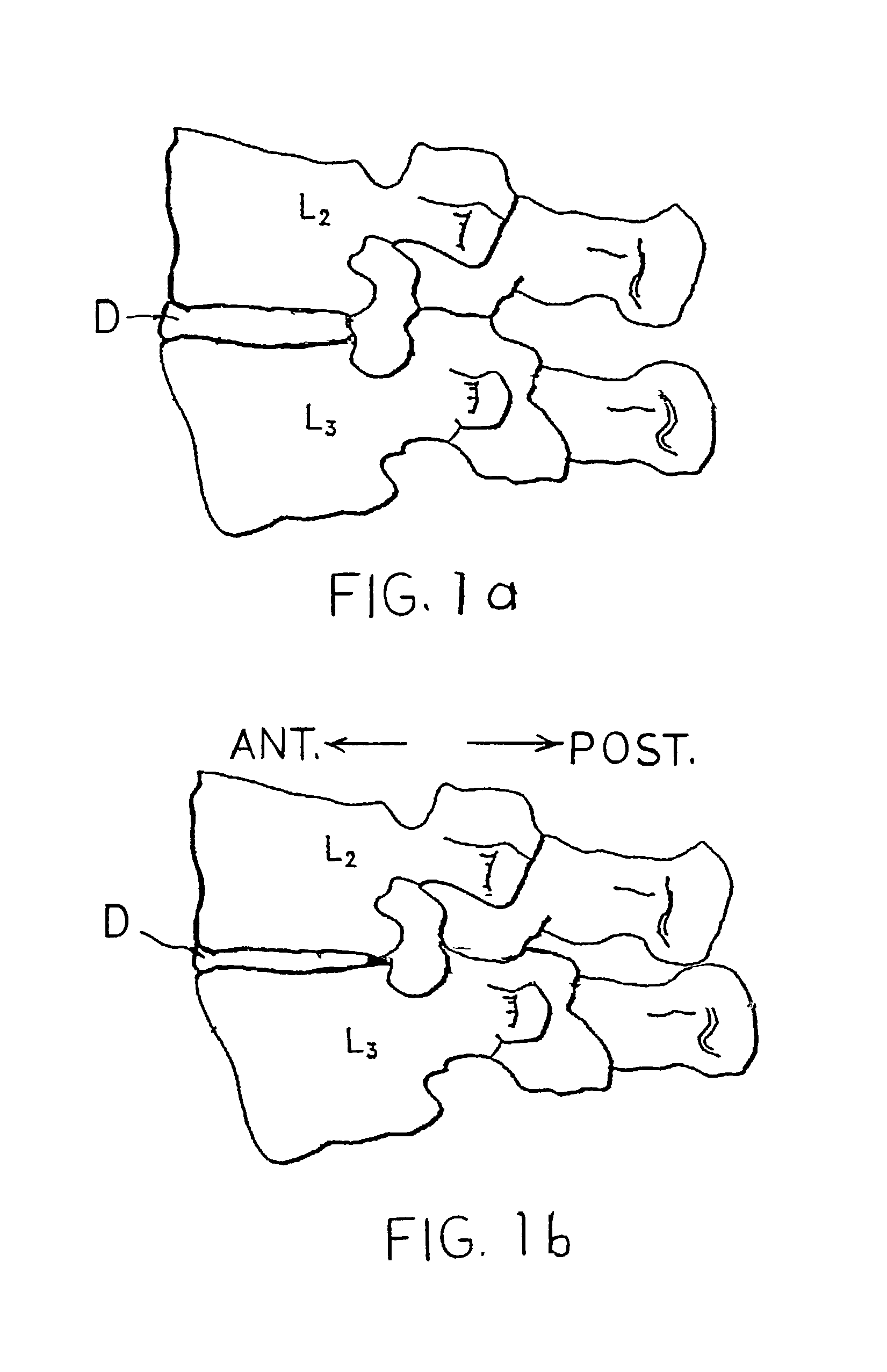Devices and methods for the restoration of a spinal disc
a disc and disc technology, applied in the field of spinal disc restoration, can solve the problems of reducing the hydraulic pressure of the internal disc, changing the extracellular matrix pattern of the disc, and reducing the biosynthesis of extracellular matrix components by the disc cells
- Summary
- Abstract
- Description
- Claims
- Application Information
AI Technical Summary
Benefits of technology
Problems solved by technology
Method used
Image
Examples
Embodiment Construction
[0049]For the purposes of promoting an understanding of the principles of the invention, reference will now be made to the embodiments illustrated in the drawings and described in the following written specification. It is understood that no limitation to the scope of the invention is thereby intended. It is further understood that the present invention includes any alterations and modifications to the illustrated embodiments and includes further applications of the principles of the invention as would normally occur to one skilled in the art to which this invention pertains.
[0050]The present invention contemplates a procedure and device that is implemented following removal of a portion or substantially all of the natural nucleus pulposus of an intervertebral disc. One important purpose of the invention is to maintain the proper disc height during the introduction of a biomaterial that is intended to replace the removed nuclear material. Removal of disc material can be accomplished...
PUM
| Property | Measurement | Unit |
|---|---|---|
| height | aaaaa | aaaaa |
| height | aaaaa | aaaaa |
| height | aaaaa | aaaaa |
Abstract
Description
Claims
Application Information
 Login to View More
Login to View More - R&D
- Intellectual Property
- Life Sciences
- Materials
- Tech Scout
- Unparalleled Data Quality
- Higher Quality Content
- 60% Fewer Hallucinations
Browse by: Latest US Patents, China's latest patents, Technical Efficacy Thesaurus, Application Domain, Technology Topic, Popular Technical Reports.
© 2025 PatSnap. All rights reserved.Legal|Privacy policy|Modern Slavery Act Transparency Statement|Sitemap|About US| Contact US: help@patsnap.com



